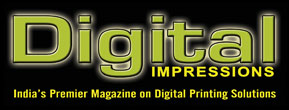Some talk about the digital transformation. Others see digitalization as an industrial revolution with the same potential for social change as the upheaval 200 years ago. In fact, a comprehensive transformation process has been under way since the beginnings of the Internet in the late 1980s. The interplay of ever more powerful processors, storage technologies, and data connections, on the one hand, and the range of ever more specific software solutions, on the other hand, is driving innovation at all levels. Digital workflows are shaping everyday working life and are having an enormous impact on companies and their structures. Wireless and wired broadband networks offer unprecedented connectivity that can be used almost anywhere thanks to smartphones, tablets, and other mobile devices. Sensors continuously deliver the raw data from all- round quality-monitored production processes, from which intelligent algorithms extract the necessary information for highly efficient, resource-saving production processes.
Digital networking is not only changing organizational and technical processes. Customer contact is also changing fundamentally: networked customers can find out about products and their ecological footprint online at any time, have access to cost and performance comparisons of different suppliers at the click of a mouse – and expect swift, end-to-end digital processing after placing an order. In Print & Packaging, this begins with the transmission of digital artwork and the online selection of substrates, formats, print runs, and any finishing. In addition, customers expect to be able to view the status of their order online at any time, receive a prompt response to email queries, have the greatest possible flexibility and choice of payment services when paying, and be able to track the delivery of their ordered goods precisely via shipment tracking.
In the digital world, too, the players along the value chain and the processes within the company are moving closer together. Experts speak of horizontal integration, the formation of value creation networks, and vertical integration of production and all other areas of the manufacturing organization. It is increasingly shifting to digital platforms that bring together the respective competencies of the players involved. This progressive shift toward a Platform economy is also one of the digital megatrends that the Print & Packaging community is facing – and often playing a pioneering role in.
Convergence – physical and digital worlds grow together
Even if it sounds like a contradiction: print service providers and suppliers of Print & Packaging technologies are among the pioneers in the introduction of digitally networked workflows. Although they represent a haptic, analog product world with printed and finished papers, cartons, glasses, plastics, textiles, ceramics, metals, or wood and wood-based materials, they recognized early on the innovative potential of digital artwork, digital photography, desktop publishing, computer-to-plate processes, digital process monitoring technologies, digital printing, and digital finishing processes. For three decades now, they have been exploiting this potential to the benefit of their customers. The development is far from complete. The further it progresses, the more possibilities and opportunities will open up.
It is now becoming increasingly clear that digital and printed media will continue to coexist in the future because they have different, often complementary strengths and weaknesses. Neuroscience shows us that human brain activity increases by a factor of ten with each additional sense addressed. Print media are able to increase this multisensory amplification exponentially by offering not only visual stimuli, but also – in contrast to simple displays – haptic, acoustic, and olfactory stimuli. For this reason, many companies are once again turning to classy-looking print products for their branding, often personalizing them using digital printing. Such activities are often integrated into cross-media campaigns in which advertisers use analog and digital channels to differentiate themselves from their competitors with distinctive imagery, corporate identity, and clear brand messages.
In such campaigns, the value and impression are usually carried through to the packaging. This is where the digital and physical worlds converge. Because as much as it serves as a brand ambassador, packaging primarily fulfills rather everyday functions: in many cases, the physically present, printed and finished carrier materials make the transport of liquid, powdery, small-particle, and sensitive products possible in the first place. They protect against transport damage, contamination, and premature spoil- age. In addition, packaging imprints inform customers about the product and its ingredients. And last but not least, an appealing packaging design at the point of sale can make the difference between a bestseller and a slow mover.
Courtesy: drupa
|

